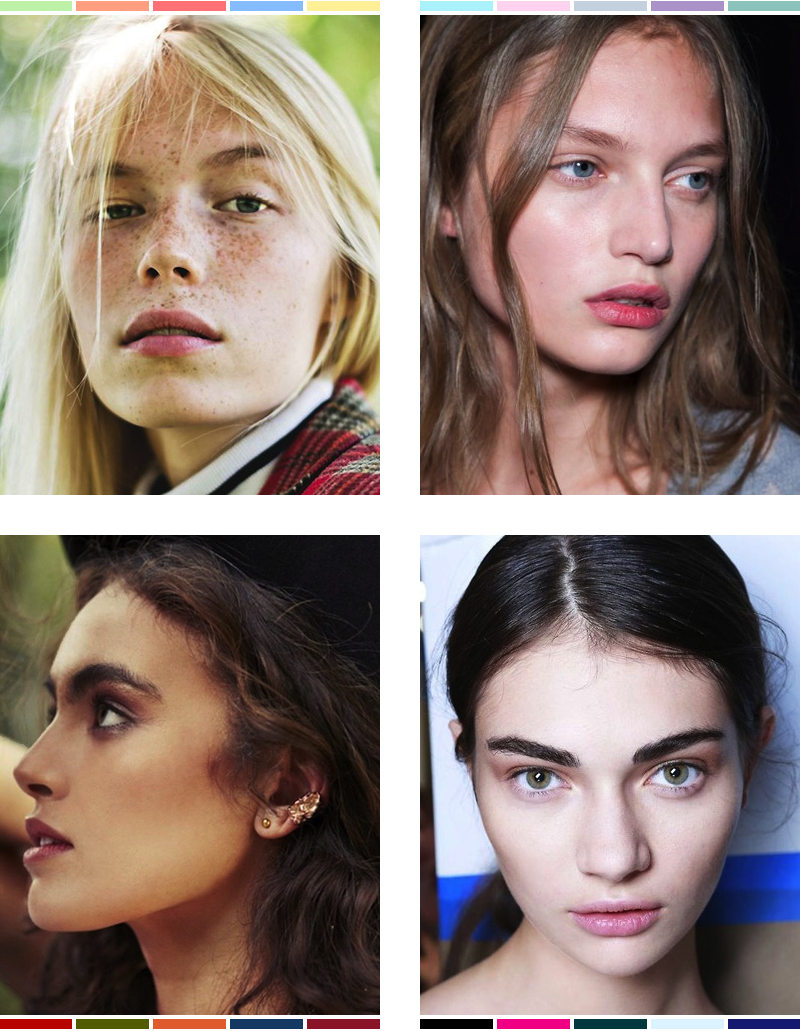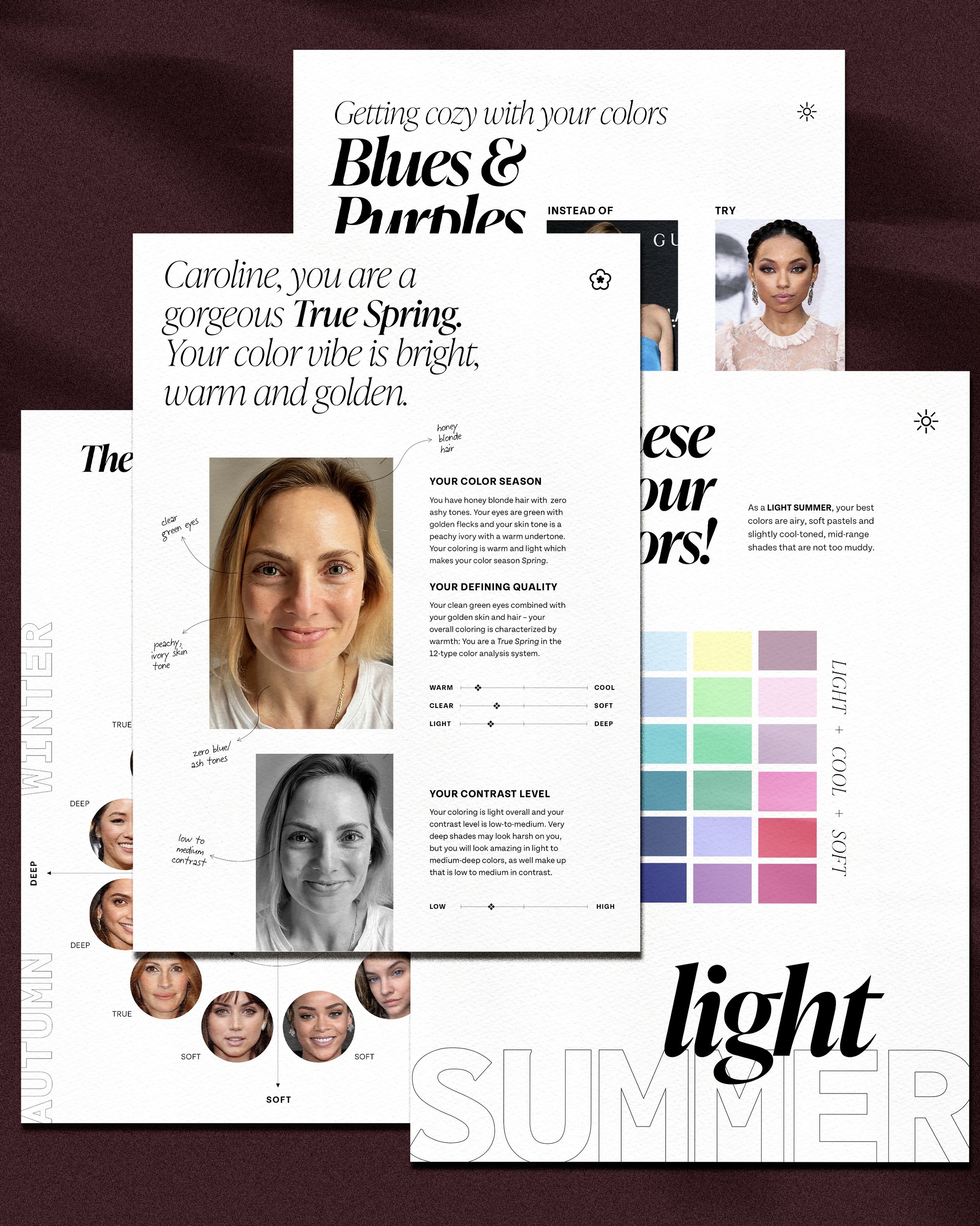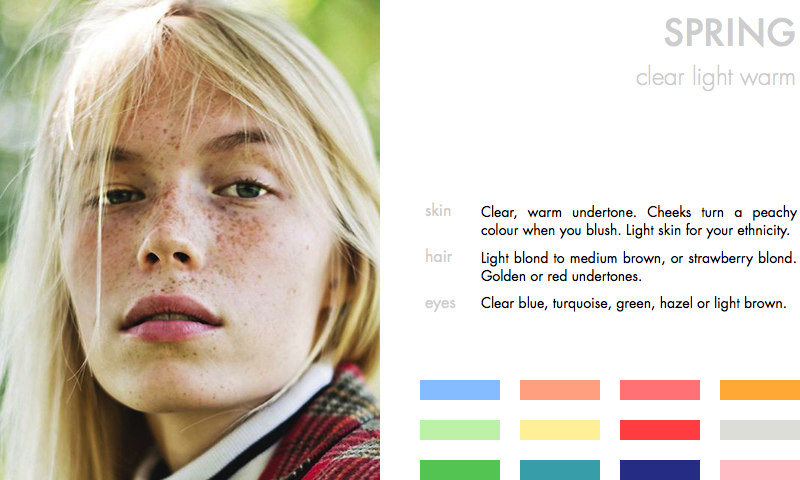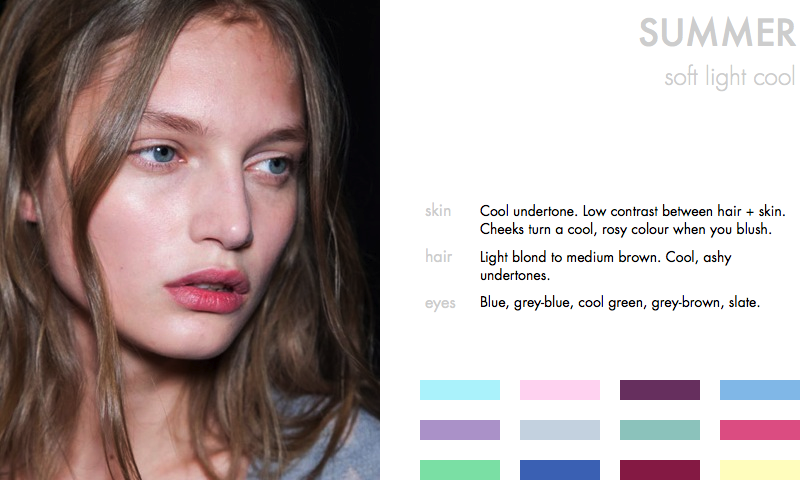Colour Analysis Part I: Finding your Type
☞This post is designed to give you an overview of seasonal color analysis only. If you want extra help finding your color type and learn all about your colors: I am currently offering Virtual Color Typing. You can find all the details here. 🤑 Get 10% OFF with code WHATSMYSEASON.
“I think you are a Summer!”, “I love pale blue, but I’m a deep Autumn, so I can't wear it”, “Please help me: I’m a cool Summer and don’t know how to build my fall wardrobe”. Colour analysis and specifically the four-season typology has always been a prevalent topic here on INTO MIND, and a dedicated post has long been on my to-do list. Although I’m big on colour and all for creating a wardrobe around a defined colour palette, I have so far avoided the topic of colour analysis for one reason: I am not a huge fan of typologies that prescribe a type-based solution. I don't want to tell you exactly what to wear or what items to put in your wardrobe, I’d rather just give you a formula for coming up with your own solution.
BUT... while moving to Berlin, I rediscovered a copy of Carole Jackson’s classic "Color me Beautiful", which came out in the 80s and was a huge hit at the time. I remember finding it in my mum’s book collection when I was about 14 and being super fascinated by it. I liked all the pretty colour palettes, sure. But more importantly, I loved how it emphasized the importance of figuring out what works for you and your life specifically, instead of following trends, and the idea of slowly building up a wardrobe around your individual style.
All in all, I do believe colour analysis can be an enourmously helpful tool for curators, because it forces you to consider the role of colour in your wardrobe and points you towards a palette that suits your own complexion and away from trends. However, I think a colour profile should be used as a guide, rather than a set of rules. Relying on your colours 100% might stifle your own creativity and prevent you from fully exploring your individual aesthetic preferences.
This week will be dedicated to colour, colour analysis, the 4 season colour theory and above all: tailoring your wardrobe to your own individual colour palette (whether it follows traditional colour theory or not). First up: Finding your colour type. "Color Me Beautiful" increased the number of types from 4 to 12 sometime in the 90s, which has improved the accuracy of the theory, but at the same time made it a littler trickier to find your own type. I'll do my best to explain the basics in this post, but feel free to message/email me for assistance. The next post will then be a complete guide to your colour palette, for every sub-type. Then, at the end of the week or the beginning of the next, I'll show you how to utilize what you have learned about your type to curate your wardrobe and tailor it to your individual colouring (plus: what to do if your colours don't match your preferences/ style concept).
Need help finding your color type?
I now offer virtual color analysis in the form of Personal Color Guides.
🤑 Get 10% OFF with code WHATSMYSEASON.
🤳 Here’s how they work: You send me a pic and I’ll send you back a personalized guide that includes a full assessment of your colouring and a deep-dive into your unique defining qualities and how to enhance, accentuate and celebrate them.
The 4 Basic Seasons
The Color Me Beautiful theory is based on four colour types: 🌿 Spring, 🌸 Summer, 🍁 Autumn and ❄️ Winter. Which seasonal type you are depends on two basic variables:
the undertone of your skin, hair and eyes (warm/golden vs cool/ashy)
how light vs deep your overall colouring and specifically your hair is
The seasons represent the four possible variations of these two variables: If your natural hair colour is lighter than medium brown, you would be typed as either a Spring or a Summer; if it’s darker you are a Winter or an Autumn. If your skin tone and hair have a warm undertone, or you are a natural red-head, you would be classed as either a Spring or an Autumn; if your skin has a blue-ish, cool undertone and your hair is more ashy and has no golden or red highlights, you are either a Summer or a Winter.
Note: This is a very stripped-down summary of the whole process. The original Color Me Beautiful material provides a much more detailed explanation and also outlines various exceptions (e.g. in very rare cases a Winter type can have almost platinum blond hair).
Below you'll find four quick profiles of the seasons and 12 typically suggested shades. Go through each profile and compare their descriptions to your own colouring (natural hair colour and bare skin!). Ignore your favourite colours and your wardrobe. For now you are trying to get an accurate view of your colour type and the colours that suit you best, regardless of whether you like them or not (we'll deal with disparaties in the next posts). If you find it difficult to figure out your season, you might be a less pronounced or more neutral type, and will have better luck with the more refined 12-type system (more on that below).
The 12 Colour Types
If you immediately recognized your own colouring in one of these four seasons: congrats! If not, don't worry. Unless your colouring clearly matches one of the two sides of each variable (i.e. is obviously light vs dark and warm vs cool), figuring out which type you are might require a little digging.
Also: the closer you are to neutral in either of the variables, the less will your colour palette apply to you. If your neutral/warm colouring puts you in the Autumn category - but only just - you will suit different colours than someone who has deep, red hair and is immediately identifiable as an Autumn. For example, I have naturally light blonde hair, so I am definitely either a Summer or a Spring type. What’s my skin’s undertone? That questions is a little harder to answer. In general I would say I veer more towards the Spring side, because my skin and hair are not ashy, and when I blush my cheeks turn a peachy colour, rather than a bluey pink.
Now...Carole Jackson says that all of us fit one colour season, and only one, but I have to disagree. Both variables lie on a clear continuum (light to dark and cool to warm). They are not two completely distinct groups, so treating the corresponding palettes as distinct makes little sense. The closer you are to neutral in either of the variables, the more likely it is that colours of the neighboring palette suit you just as well, and also that several of your own palette’s colours might not suit you.
This is where the updated Color Me Beautiful typology (based on 12 instead of 4 types) comes in. In order to a) accomodate for people whose colouring is close to neutral in either variable and b) to differentiate a bit better within the seasons, they added a secondary factor. This secondary factor depends on your colouring's most defining quality: light, deep, clear, soft, warm or cool. Your secondary factor can help you further narrow down your own seasonal colour palette and also show you which neighboring palette might contain some shades that suit your colouring as well. If you veer between two seasons, it’s probably because they both share your most defining quality, e.g. if you have a deep overall colouring, you might find it hard to decide between Autumn and Winter. If you are interested in the whole colour typing idea and considering to adjust your wardrobe accordingly, I strongly recommend you figure out your secondary factor as well as your base season. It will just give you a much more accurate idea of which colours suit your individual complexion - if you are going to use any kind of typology, do it right. Here's a run-down of the six secondary factors:
Light: You are either a light Summer or a light Spring. Your hair colour is light (blond or light brown), your skin is light for your ethnicitiy and your eyes are either a light blue, green or grey. You look best in the soft, light and muted shades of your colour palette, e.g. peach (Spring) or a pale lavender (Summer).
Deep: You are either a deep Autumn or a deep Winter. You have dark brown or black hair and deep brown, green or hazel eyes. You look amazing in the deep, vivid shades of your palette, e.g. deep terracotta (Autumn) or black (Winter).
Warm: You are either a warm Spring or a warm Autumn. Your overall colouring has a distinctive warm undertone to it. Your hair is either golden blond to brown, or strawberry blond to deep auburn. Your eyes are green, topaz, hazel or light to medium brown. You best suit the mid-range colours in your palette that are neither too intense nor pale, e.g. a medium tomato red (Autumn) or a soft aquamarine (Spring).
Cool: You are either a cool Summer or a cool Winter. Regardless of whether you have light or dark skin/hair, your overall colouring has an underlying cool quality to it. Like the warm type, you also look best in the mid-range shades of your palette, e.g. emerald green (Winter) or periwinkle (Summer).
Clear: You are either a clear Winter or a clear Spring. Your overall colouring is high in contrast and saturation. Your hair is either a medium brown to black or a vivid, bright blond, your eyes are blue, bright green, topaz, amber or turquoise. You look best in saturated, clear colours, e.g. a bright, warm pink (Spring) or hot pink (Winter).
Soft: You are either a soft Summer or a soft Autumn. There is little contrast between your skin, hair and eyes and your overall colouring is relatively close to neutral. Your hair is neither very light nor very dark. Your eyes are green, grey-blue, hazel or brown. You look best in soft, muted shades, e.g. olive green (Autumn) or blue teal (Summer).
If you were wondering, the women in the pictures are examples of the light Spring, cool Summer, deep Autumn and clear Winter.
So, what type are you? Was it easy to figure out or did you veer between two types? Are you into the 4 season colour typology or do you find it confusing/restrictive/not helpful?
The entire colour analysis series:
Part I: Finding your type (this post)
Part II: A complete guide to your colours (for each sub-type)
Part III: How to incorporate your colours into your wardrobe (+ what to do if your colours don't match your preferences/style concept)
IMAGE SOURCES// Spring: Noora Lappi by Kevin Trinh via FashionEditorials.com. Summer: Alexander Wang S/S 2014 via thebeautymodel. Fall: Mr.Kate Days of Ore Lookbook shot by Kat Borchart. Winter - Indigitalimages.com, Derek Lam S/S 2014 via Vogue.it.





